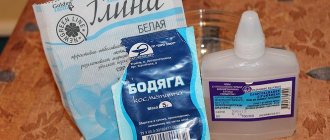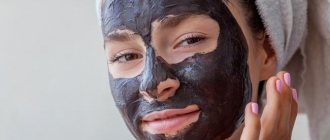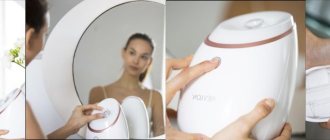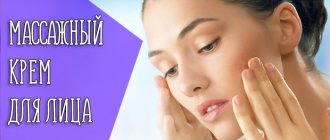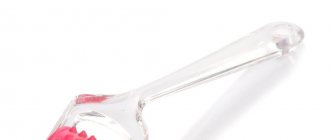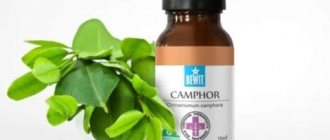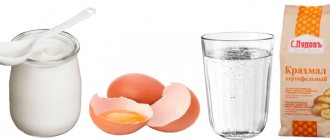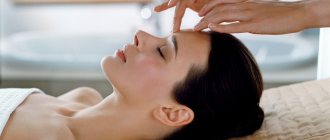Skin is the most sensitive human organ, more than others in contact with the environment. Due to constant exposure to negative external factors, the outer layer of the skin hardens and dies.
Skin cells are constantly renewed, but over the years the aging process becomes more intense. To slow down aging and accelerate skin renewal, whitening peeling is used. It is carried out using different methods both in a beauty salon and at home.
What to use for a chemical peel at home
Before you start choosing a peeling drug at home, you need to conduct an “internal investigation” - let's call it this way:
- highlight the problems that you want to get rid of through the procedure;
- choose the appropriate type of peeling;
- conduct pre-peel preparation and stock up on knowledge about post-peel care.
Now we smoothly move on to the types of self-peeling. All the means used can be divided into four groups:
- natural products that are available at home or can be purchased in the store. We choose those that have a peeling effect and based on them we create our own composition (recipes for the most effective ones are attached);
- professional products that are used to perform procedures in salons. They can be purchased in specialized stores. Professional peeling at home is an excellent alternative to salon care. But carefully read the composition of the product, not only the effect, but also your safety depends on it;
- pharmaceutical products that have a peeling effect. There are medications in pharmacies that can not only cleanse the epidermis, but also have a therapeutic effect on “damaged” skin;
- products from stores selling components for soap making and cosmetics.
When considering peeling with pharmaceutical products, you should pay special attention to finished products. This is the optimal, safest option, since the composition is balanced and the risk of side effects is almost zero. For example, among enzyme peelings, “Enzyme-salicylic peeling Stopproblem” is very popular. It is perfect for young skin, cleanses and prepares the epidermis before applying nourishing masks or creams.
Acid chemical peels are more complex and more aggressive. However, such compositions are capable of combating a large number of problems and can be used at any age.
There are ready-made products with these active ingredients. Very often, acids are included in professional scrubs used for home peeling. However, you can purchase a separate acid at a pharmacy or specialty store and create a product for yourself.
The most commonly used acid components are:
- salicylic;
- glycolic;
- dairy;
- retinol;
- apple;
- pro-grape;
- lemon;
- almond and others.
Home chemical peeling is an effective facial cleansing procedure that should be performed regularly. This approach will significantly save time and money. However, you need to be absolutely sure that the manipulation will not harm.
What it is?
Deep peeling is a chemical procedure in cosmetology that restores youth and healthy color to the face. This type of peeling destroys the epidermis, papillary and reticular layers of the skin. Deep peeling works with layers of skin up to 0.6 mm deep, eliminating wrinkles, post-acne scars and other scars. During the procedure, most of the elastin and collagen fibers are removed. Small areas of tissue remain on the skin from which new skin grows.
After the procedure, regeneration of the skin begins, the synthesis of elastin and collagen molecules starts. The first results can be seen after a week: the complexion evens out, the skin tightens and stops shining. The main result is that the protective properties of cells are improved.
Are there any contraindications and side effects?
Before you do a chemical facial peel at home, make sure that your skin will respond normally to such exposure. The method is quite aggressive and has its contraindications and warnings.
Peeling should not be carried out in the following cases:
- allergy to the components of the product;
- damage to the integrity of the skin (wounds, scratches, cracks), as well as in the presence of purulent pimples, exacerbation of acne;
- exacerbation of herpes infection;
- neoplasms on the face, regardless of origin;
- inflammatory processes at the site of exposure;
- mental disorders;
- exacerbation of chronic ailments;
- situational diseases in acute form, accompanied by an increase in body temperature;
- pregnancy at any stage;
- breastfeeding period;
- age up to 18 years. Only for special indications and in the salon!!!
The chemical peeling procedure is also not recommended during menstruation and while taking hormonal medications (including contraceptives). During this period, the body's reaction is unpredictable.
Side effects include the following:
- skin redness;
- dryness and flaking;
- the appearance of swelling.
These manifestations may be present for a short period of time (from several hours to 2-3 days). With proper care, they disappear spontaneously and do not require specific intervention.
If after the session you notice severe hyperemia, swelling, or a burning sensation that gets worse, you need to seek qualified help from a cosmetologist or dermatologist.
It should also be noted that if contraindications are taken into account, all rules of preparation, execution of the procedure, and post-treatment are observed, negative consequences do not develop.
Contraindications
There are limitations to any cosmetic procedure, and they also exist for physical peeling. Cold facial cleansing is contraindicated if the patient has the following health conditions:
- Infectious and viral diseases, colds, tuberculosis or flu;
- Allergic reaction to cold;
- Poor cold tolerance, sensitivity to low temperatures;
- Diseases of the cardiovascular system, blood diseases;
- Feverish state, increased body temperature;
- Neuralgia disorders, epilepsy;
- Oncological neoplasms;
- Spider veins on the face;
- The integrity of the facial surface is compromised, there are open wounds and abrasions;
- For women with male-pattern body hair (hirsutism), cold peels are prohibited;
- Restrictions on cold skin cleansing also apply to patients who have recently undergone surgery.
Cold peeling should be planned for winter and late autumn. The fact is that after the procedure the skin becomes thinner and becomes sensitive to ultraviolet radiation, so excessive pigmentation may occur.
How to do a chemical peel at home
Before studying the specifics of the procedure, let us discuss an important point. If this is your first time using the active composition, you must conduct a sensitivity test. To do this, apply a drop of the prepared mixture to the inside of the elbow or to a small area behind the ear. If after a quarter of an hour no discomfort is observed, the procedure can be carried out.
Let's look at how to do chemical peeling for the face at home step by step. But first, let’s say that 2-3 weeks before the procedure it is necessary to limit exposure to the sun and apply a special cream at night that will prepare the skin for the effects of the active composition.
Now directly step-by-step instructions on how to do chemical peeling at home:
- cleanse the skin of makeup and surface impurities. To do this, use gel or milk for washing;
- skin preparation. Vaporization is carried out in the salon using a special apparatus. You can prepare your face at home in this way - apply a very warm compress from a decoction of medicinal herbs for 2-3 minutes;
- treatment with active composition. You can apply the prepared product with a brush or cotton pad. Distribute evenly over the entire surface, avoiding the area around the eyes and lips;
- The duration of the procedure is no more than five minutes. Some formulations may have less. During exposure, a slight tingling or burning sensation may occur - this is normal. If the sensation is too strong, immediately rinse off the product with water. To avoid side effects, you must immediately apply a soothing cold compress from a decoction of the string to your face;
- After the specified time, the composition is washed off with a large amount of first warm and then cold water. Cosmetologists recommend stocking up on a product to restore skin pH and applying it to your face immediately after removing the working composition;
- After five to ten minutes, apply a moisturizing or nourishing cream according to your skin type.
Helpful advice. It is better to carry out the procedure in the evening. And it is advisable before the weekend for the face to fully recover. Before going outside, use sunscreen with a high level of UV protection.
With laser
Laser facial resurfacing is gaining popularity. Despite the fact that this is a rather expensive procedure, its effect is worth it. The laser can solve serious skin problems such as:
- Local wrinkles. For example, in the corners of the eyes or around the lips, where it is difficult to apply other types of peels.
- Weak skin turgor, sagging, sagging, fuzzy, swollen oval of the face.
- Post-acne, scars, relief.
The laser can solve all these problems, due to the fact that the specialist can treat exactly those areas that are needed, and exactly at the required depth, carrying out either superficial or deep peeling. The procedure does not cause any discomfort, the recovery period is usually favorable and takes only 10 days. Side effects are rare.
In the video, what is laser facial resurfacing?
There are two types of laser skin correction. They are classified according to the design of the laser and the specifics of its effect:
- CO2 laser . Works with the chemical of the same name. This is a deep type, moreover, with certain settings it can “cut” tissue, and is actively used in modern medicine.
- Erbium laser. More modern. The laser beam passes through carbon dioxide, erbium, and becomes “soft”. Cells from the surface of the skin seem to evaporate; such a ray does not penetrate deeply.
Laser peeling is also classified according to the type of resurfacing:
- Hot laser peeling warms up the layers of skin, stimulating blood flow to them, causing the skin to intensively renew itself and produce connective tissue. The result is tighter, firmer skin.
- Cold laser peeling simply removes dead skin cells without changing the temperature of the tissue.
Home Recipes
As agreed before, we provide recipes for chemical peeling of the face at home. Home remedies include ingredients that are either always on hand or can be easily purchased at a store, pharmacy, or market.
- "Fruit Paradise" Preparing the peeling composition is very simple. You need to use fruits with a high acid content: apricots, citrus fruits, kiwi, gooseberries, cherries, raspberries, currants, cranberries, lingonberries, strawberries. To make the procedure more effective, you can make a potion from several components. Just grind the selected ingredients into a paste and carry out the manipulation according to the above plan.
- Yogurt-lemon. This self-prepared chemical peeling will not only cleanse the skin of dead skin particles, but will also help cope with age spots. You need to take an equal amount of unsweetened fresh yogurt, lemon juice and cane sugar. Further everything is according to the standard.
- Calcium chloride. Do-it-yourself chemical peeling from a pharmaceutical preparation will have an amazing effect. The skin will become soft, smooth, tightened, fresh. But keep in mind that this is a mid-cleaning and you need to act very carefully. Apply the solution from the ampoule to the skin in several layers, and then use baby soap to roll it off along with dirt and other unnecessary particles.
- "Emergency help". You won’t be able to get a solution of salicylic acid in a pharmacy—it’s extremely difficult to find it in its pure form. But salicylic alcohol is commercially available. With its help you can get rid of acne, pimples, blackheads. But this is a slow and painstaking task. It is necessary to apply alcohol to problem areas using a cotton swab.
- Honey, lemon. Among cleansing compositions, honey-based products are especially popular. The bee product has bactericidal, nutritional and moisturizing properties. The simplest recipe is to mix equal amounts of honey and lemon juice. Apply the composition to a previously prepared face and leave for a quarter of an hour. Then rinse with water and apply moisturizer according to your skin type.
As you can see, there are many alternative natural remedies that are no less effective than professional ones. However, if there are serious problems, the help of a specialist is irreplaceable.
Cleansing methods, their pros and cons
Modern cosmetology offers two main types of peeling :
- chemical;
- mechanical.
Each of them is effective and efficient.
Chemical
Chemical peeling, or acid peeling as it is also called, is carried out with acidic solutions of varying concentrations.
Under the influence of acid, the stratum corneum of the epidermis exfoliates and is completely removed. And new young cells begin active regeneration.
Chemical purification method can be divided into:
- Surface
. It affects the very top layer of the skin, copes with teenage acne, and is effective for isolated blackheads, acne, and minor acne.
The entire cleansing session lasts about half an hour. The skin receives minimal stress, so there is no recovery period after the cleansing session.
For visible results, you need to complete a full course of cleansing, consisting of 4-8 procedures, which are prescribed with a break of 14-20 days.
- Median. Acts on the upper and middle layer of the epithelium.
Prescribed for large subcutaneous pimples and frequent purulent inflammations (acne). A single session lasts about 50-60 minutes. The acid solution is applied in several stages.
The entire top layer of skin is removed, physically it looks like a moderate burn.
After cleansing, after 3 days a small brown crust may form; after another 5 days, it begins to peel off, and healthy, renewed, clean skin appears in its place.
The quantity and frequency are prescribed by a cosmetologist.
- Deep. In the case of a highly progressive inflammatory process, the most aggressive type of peeling is prescribed - deep.
It is performed under general anesthesia, lasts several hours, then requires several days of close supervision by specialists, the patient remains in the hospital all this time.
After the procedure, the patient undergoes a long recovery period from 2 months to six months. Using this method, not only problems such as acne and pimples are eliminated, but also the entire facial skin is significantly rejuvenated.
Doctor Irina Kotova talks about chemical peels:
Mechanical
Varieties:
- Scrubbing. Removal of dead cells with abrasive microparticles, which can be either natural (salt, sugar, coffee, semolina, oatmeal) or artificial (wax granules, gel microspheres) of origin.
This type of cleansing is recommended for minor inflammatory processes, single acne.
- Brossage. Cleansing is carried out with special brushes made from natural bristles. In the process of mechanical action, elastic hairs gently remove the keratinized layer of cells, polish the surface of the face, making it smooth and uniform.
This type of cleansing is recommended when several types of acne break out at the same time.
- Gommage. It is reminiscent of chemical peeling, since in this case a solution is applied that quickly hardens and turns into a film. During film removal, mechanical cleaning of the pores occurs.
This type of cleansing is allowed in case of severe inflammatory processes and numerous rashes.
- Ultrasonic cleaning. It is carried out with a device that transmits ultrasonic waves. Under the influence of these waves, the layer of dead cells peels off, and the regeneration mechanism is activated.
This type of cleansing is prescribed by a doctor in the most advanced cases.
More details about the brushing (or brossage) procedure:
Advantages:
- removes inflammatory formations;
- tightens pores, cleans sebaceous ducts, removes excess secretions;
- normalizes the functioning of the sebaceous glands, dries out oily skin;
- together with keratinized cells, it removes minor imperfections from the surface of the face (acne marks, small scars, pigment spots, expression wrinkles), polishes and evens it out.
Flaws:
- under the influence of acid, the skin gets a slight burn, side effects occur: swelling, redness, sometimes crusts;
- Some types of acid cleaning, such as medium or deep, ultrasonic cleansing are not intended to be done independently. They are done strictly in beauty salons by highly professional masters;
- with strong mechanical stress, the inflammatory process may increase.
You can find more useful information about various types of peeling in other articles on our portal. Read:
- Gas-liquid cleansing for the scalp.
- Rules for using the roller.
- Review of the best clarifying shampoos.
- What is a peeling mask, how to make it at home?
- Why is TCA cleaning performed?
How to care for your face after procedures
There is a certain “set of rules” that ensure the effectiveness of any cleansing procedure (salon or home). Failure to comply may result in negative consequences - remember this!
So:
- do not touch your face unless absolutely necessary - the skin is very thin and sensitive after the procedure, injury or infection is possible;
- for the first three days, do not wash yourself with a running rein, use a cooled, boiled one for these purposes;
- do not exfoliate the skin forcibly, so as not to injure the surface of the face;
- regularly apply a moisturizer according to your skin type;
- Before going outside, use sunscreen with a high UV protection factor;
- do not visit baths, saunas, or swimming pools for a week;
- month – taboo on solarium, beach.
Chemical peeling of the face at home is a procedure that should be performed regularly. But give preference to the autumn-winter period, when the sun is not so active.
Stages of the procedure
The deep facial peeling procedure consists of several stages:
- A cosmetologist assesses the client's skin condition, identifying problems.
- The face is completely cleansed of makeup and dirt. The skin is treated with a degreasing lotion.
- A previously selected peeling substance is applied to the skin. The cosmetologist sets the exposure time depending on the aggressiveness of the substances and their effect on the epidermis.
- After time, the substance is removed with a neutralizer. A soothing cream is applied to the skin.
- If the procedure was carried out with phenol, a chemical film of jelly is applied to the skin, which after deep peeling must be kept on the face for up to three days under the supervision of specialists. Afterwards, the skin is treated for wounds and damage.
We recommend: What is a peeling roller, how often can it be used on the face? Methods of application and best manufacturers
The duration of the session depends on the area of skin being treated. It usually takes from 20–30 minutes to an hour.
Recommendations from cosmetologists
Chemical peeling for the face at home according to individually selected recipes is a great opportunity to keep yourself in shape all the time. Cosmetologists not only do not object, they even strongly recommend doing such procedures yourself.
The opinion of experts is as follows:
- a safe alternative to chemical peeling carried out in the salon - a jointly selected product, procedures, compliance with precautions and post-care rules. A cosmetologist will help you take all these aspects into account;
- be sure to take into account your skin type in order to choose the right active ingredients and the regularity of “home cosmetology” sessions;
- If you detect any incomprehensible manifestations that cause even the slightest discomfort, seek professional help.
Manipulations must be carried out extremely carefully, do not use highly concentrated products, and take into account the characteristics of your own body. Only then can good results be achieved.
Types of peelings for problem skin
Before you start choosing products to care for problem skin, you need to determine the causes of this problem . These include the following:
- Disruption of the sebaceous glands. Due to the large amount of secretions, inflammation usually develops. They are usually accompanied by the appearance of acne and pimples.
- Incorrect use of cosmetics.
- Lack of adequate care.
Peeling for problem skin is considered an ideal option, since it allows you to quickly cope with cosmetic imperfections.
Currently, there are several types of procedures :
- Chemical peeling – different acids are used for it.
- Industrial peeling – sold ready-made. It may contain plant extracts or acids.
- Natural peeling - you can do it yourself.
Features of choosing the type of peeling
To choose the right type of peeling, you need to take into account some differences:
- Chemical peeling for problem skin is considered the most effective procedure. But after it is carried out, a recovery process is required, since burns form on the skin during the procedure. With superficial cleansing, rehabilitation takes 3-4 days. If deep cleaning is carried out, recovery takes 1 month.
- Industrial products are easy to use . After them, recovery occurs after 5-6 hours. However, these compositions do not provide such a long-lasting effect.
- Homemade formulations have almost the same effect as industrial ones. However, to maintain the effect, they are carried out at least once a week.
Types of mechanical peeling
In addition to the common types of mechanical peeling in the form of scrubs, there are several other types of this procedure:
- Brossage involves cleansing the dermis using special brushes. Thanks to this, dead cells are exfoliated with elastic hairs. As a result, the skin becomes more beautiful and elastic.
- Gommage is to some extent a chemical peeling, since it involves the use of special solutions. However, this intervention does not require long-term recovery. The substance that is applied during the procedure turns into a film. Then it is carefully removed. This can be done manually or using special compounds.
- Ultrasonic cleansing involves getting rid of rashes and acne using a special device. Ultrasound affects the top layer of skin, ensuring its restoration.
Features of laser peeling
This method is considered a non-surgical method of skin treatment , which ensures its effective renewal. The procedure is based on the evaporation of keratinized dermal cells through the thermal effect of a laser.
This type of peeling has several types:
- Light - consists of cleansing the dermis with small defects. They can appear in the form of single pimples, acne or small wrinkles.
- Medium – required for people who are used to leading an active lifestyle. Due to excessive sweating, the pores become clogged with dust and salts. Thanks to fractional laser resurfacing, it is possible to quickly and efficiently remove all imperfections.
- Deep – this type of procedure affects fairly deep layers of the dermis.
Unlike chemical treatments, laser peeling does not lead to the appearance of a crust . As a result of this manipulation, only minor swelling occurs. It goes away within 5-6 days.

